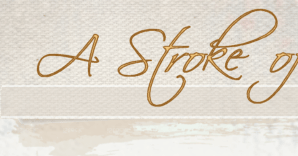 |
|
 03-22-2006, 10:42 AM
03-22-2006, 10:42 AM
|
#1
|
|
Juried Member
Joined: Mar 2006
Location: Milano, Italy
Posts: 102
|
Chromatic law from Impressionism
Allthough this "colour complementarity" is visible in all Monet 'works, there are few portraits showing this technique. What do you think about this painting? Can you obtain complementarity even from a photo?
|
|
|

|
 03-22-2006, 12:03 PM
03-22-2006, 12:03 PM
|
#2
|
|
Juried Member
Joined: Mar 2004
Location: 8543-dk Hornslet, Denmark
Posts: 1,642
|
Hi Adriano,
This is one of yours, right?
You draws so well, but I think that your touch is closer to Renoir than Monet, what do you think ?
I see blue and pink strokes in the complexion and think that it works well. Your edges are really something.
Keep on posting, Allan
|
|
|

|
 03-22-2006, 12:27 PM
03-22-2006, 12:27 PM
|
#3
|
|
Juried Member
Joined: Mar 2006
Location: Milano, Italy
Posts: 102
|
Quote:
|
Originally Posted by Allan Rahbek
Hi Adriano,
This is one of yours, right?
You draws so well, but I think that your touch is closer to Renoir than Monet, what do you think ?
I see blue and pink strokes in the complexion and think that it works well. Your edges are really something.
Keep on posting, Allan
|
Hi Allan
I wish it were mine! I would be a millionaire!!!!
It 's one of Gustav Klimt's portraits.
The complexion is what I wanted you to notice.
I'll send another one.You should know it.
Ciao
|
|
|

|
 03-23-2006, 09:31 AM
03-23-2006, 09:31 AM
|
#4
|
|
Approved Member
Joined: Sep 2002
Posts: 1,730
|
Adriano,
When you talk about getting complementary color in portraits from photos, do you mean 'working' from photo reference as opposed to working from life or are you asking if we can see the complementary color in the Monet example?
|
|
|

|
 03-23-2006, 03:55 PM
03-23-2006, 03:55 PM
|
#5
|
|
Juried Member
Joined: Mar 2006
Location: Milano, Italy
Posts: 102
|
Hi Sharon
I meant working from photos.Obviously you cannot see the complementarity on a photo,but you always do a complementary choice when working, first when you take a blue-grey or agreen-grey paper (it's complementary to the complexion) , second when you put on paper colours that mixed toghether let you get the complexion from a distance. Tomorrow I'll post a visible procedure so you 'll understend.Of course you must have been learnt it after painting from life before applying it to a photo.
By the way , the two portraits above are from Gustav klimt ,the great master that in spite of been realistic used the complementarity law from impressionism.
Your paintings are delicious to me . I admire who does things that I would't even think about. Strong and equilibrated colors and a beauty of a fimale face that seems childish , sensual and regal at the some time.
Ciao
Adriano
|
|
|

|
 03-24-2006, 05:58 AM
03-24-2006, 05:58 AM
|
#6
|
|
Juried Member
Joined: Mar 2006
Location: Milano, Italy
Posts: 102
|
Hi Sharon I'll hope you 'll like it
I begin whith a drawing by a brown color pastel pencil!
|
|
|

|
 03-24-2006, 06:13 AM
03-24-2006, 06:13 AM
|
#7
|
|
Juried Member
Joined: Mar 2006
Location: Milano, Italy
Posts: 102
|
Secondarily
I put the pink complexion to cover the blue -light color paper !
It's iust an eye, but the procedure will suit in general for a nude or a figure.(putting light color first ,controlling the balance allover the painting)
|
|
|

|
 03-24-2006, 06:35 AM
03-24-2006, 06:35 AM
|
#8
|
|
Juried Member
Joined: Mar 2006
Location: Milano, Italy
Posts: 102
|
I put half tones looking at how cold or hot are the different parts of the face.I've never used my fingers. I know my colors so I should tell you
the exact name ,next time , if you want to, I'll tell you the palette.
|
|
|

|
 03-24-2006, 06:46 AM
03-24-2006, 06:46 AM
|
#9
|
|
Juried Member
Joined: Mar 2006
Location: Milano, Italy
Posts: 102
|
Now I continue to mix colors that I know ,for example orange and green or violet and yellow, being carefull to tone toward cold or hot color. I haven 't use my finger yet.
|
|
|

|
 03-24-2006, 07:04 AM
03-24-2006, 07:04 AM
|
#10
|
|
Juried Member
Joined: Mar 2006
Location: Milano, Italy
Posts: 102
|
I did a mistake before putting the some painting, anyway I''ll continue.
Now I go on applying strong colours and, using the little finger at the end, getting shadows (under the right eye or on the eye-brow).I can use couples of complementary colors because I know them very well.
When I buy the pastel colors I don't need to watch the pastel -number ,I can say it's all right just looking at it.
If I don't have a white-blue I dirty my finger on a blue spot I made before (you can see it on the right) and I cover the white ,
so the light should be cold.
Ciao
|
|
|

|
|
Currently Active Users Viewing this Topic: 1 (0 members and 1 guests)
|
|
|
 Posting Rules
Posting Rules
|
You may not post new threads
You may not post replies
You may not post attachments
You may not edit your posts
HTML code is Off
|
|
|
|
|
|
All times are GMT -4. The time now is 03:53 AM.
|

